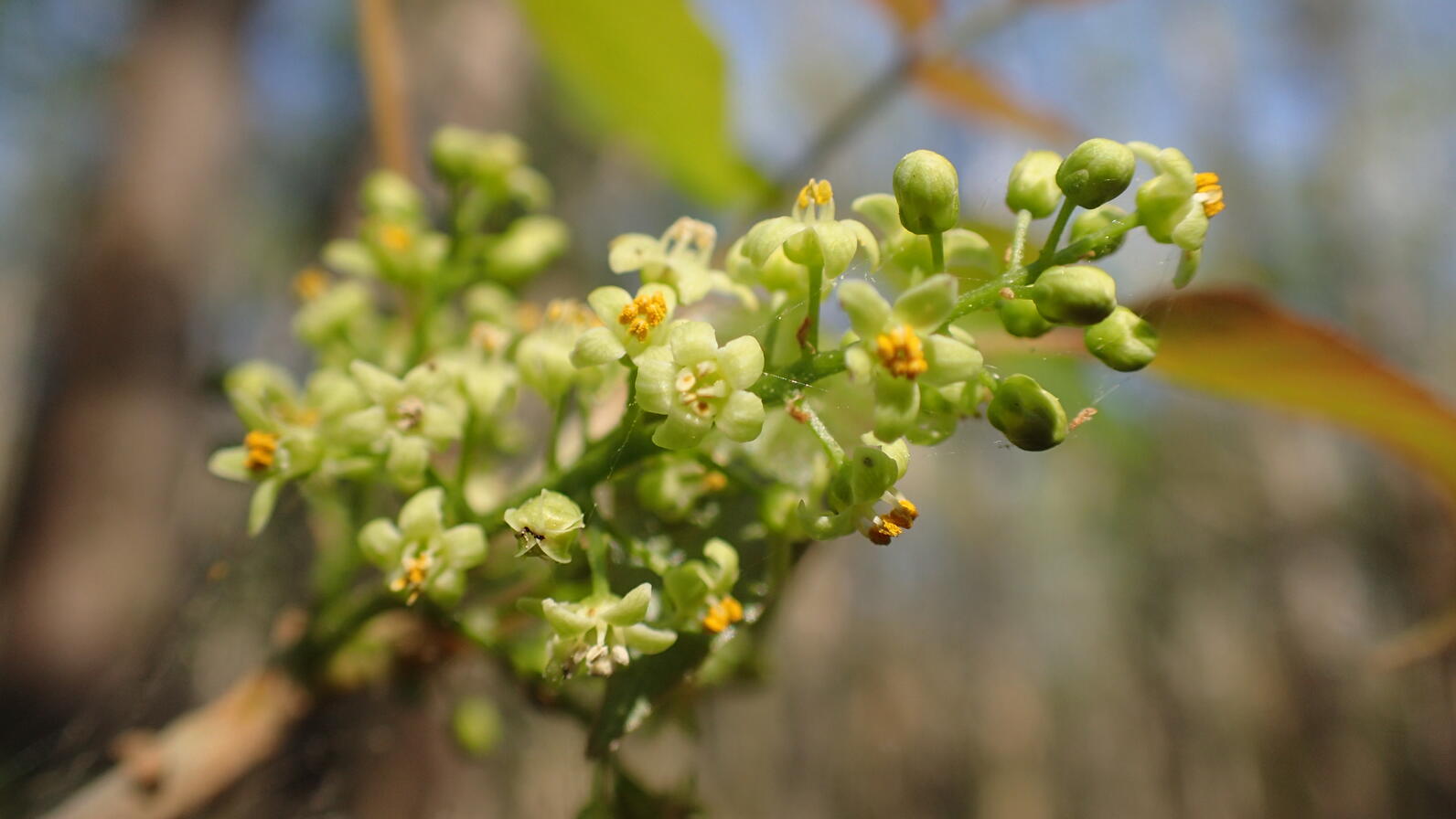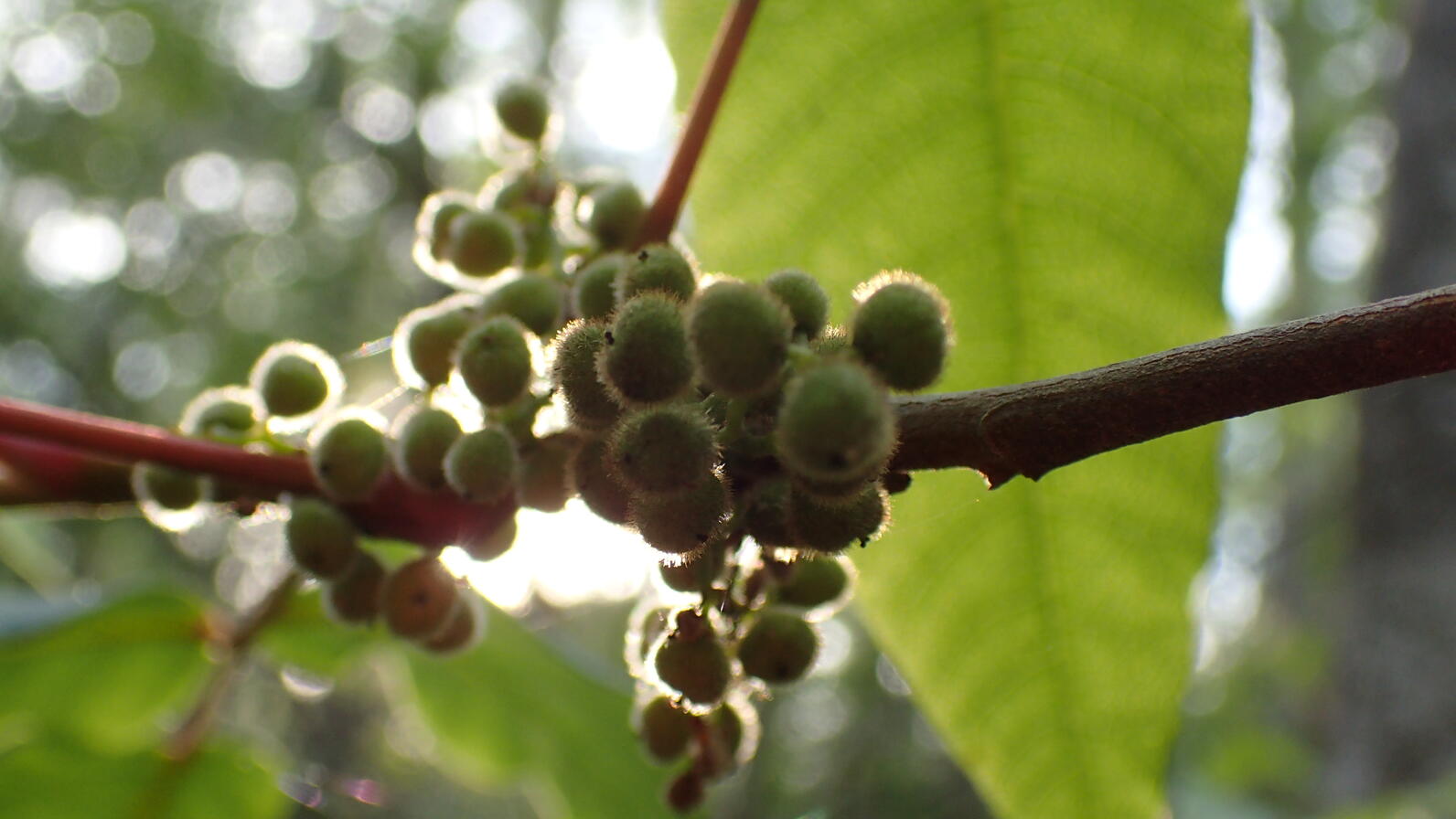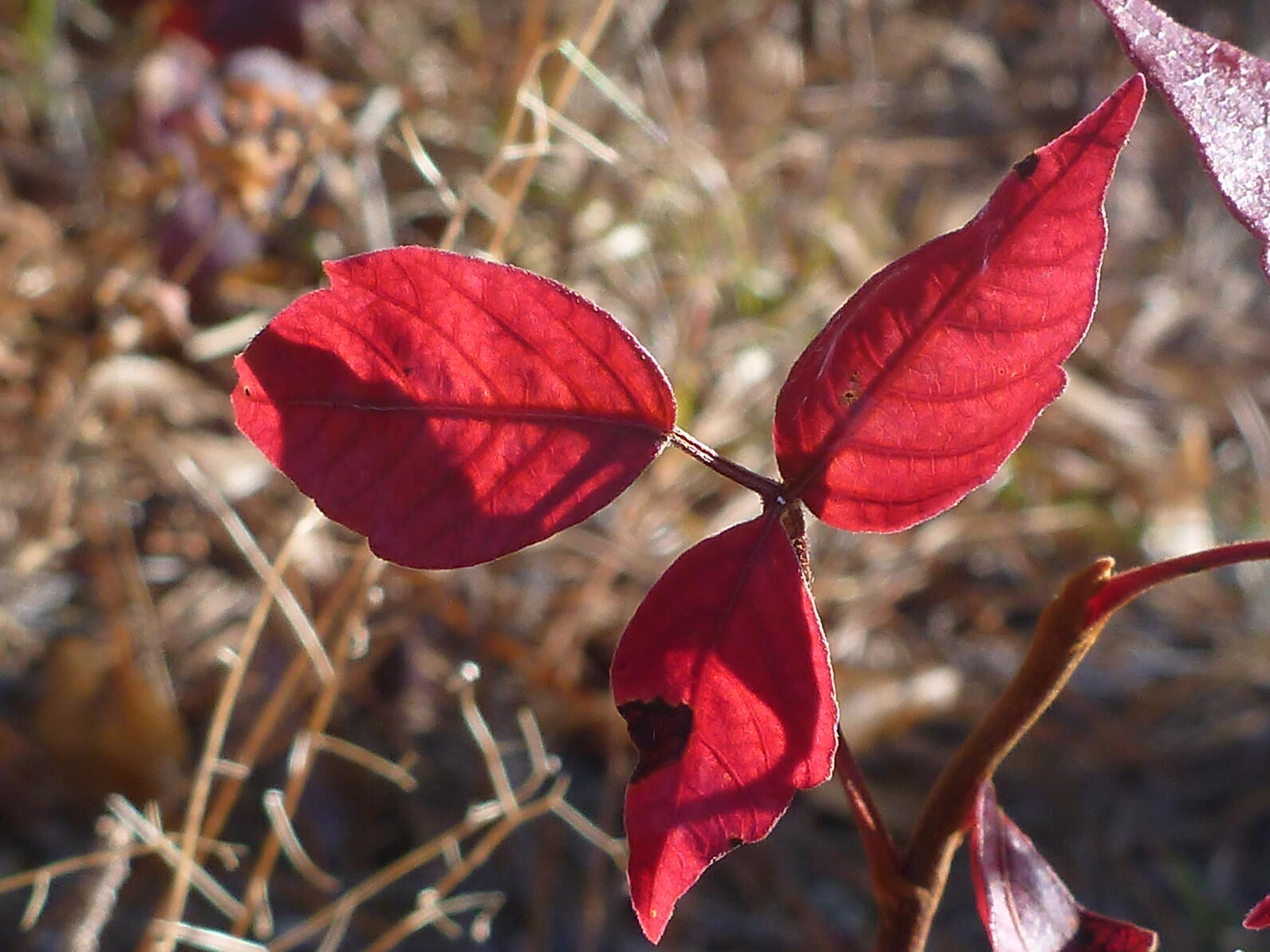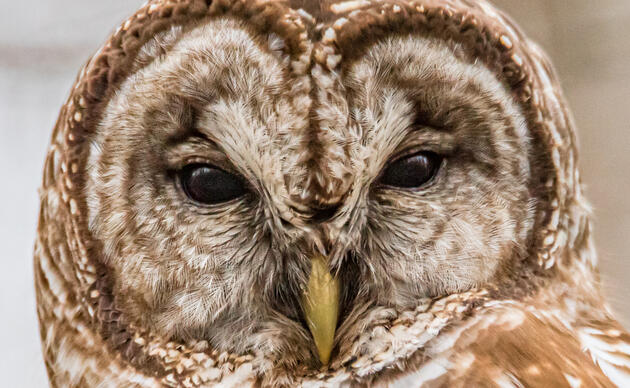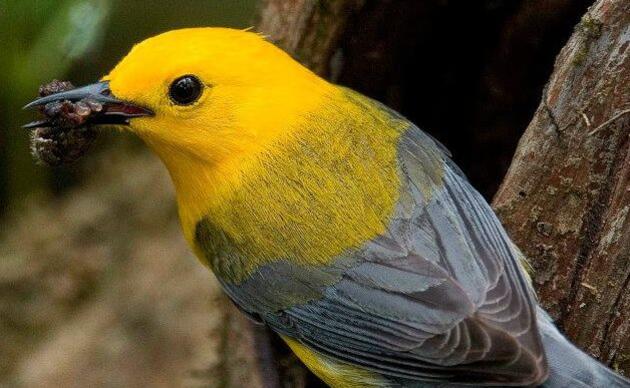Poison Ivy (Toxicodendron radicans) is a climbing vine in the cashew family (Anacardiaceae). It is a common plant in many different environments throughout the eastern US. It's easily recognizable by its hairy vines and compound leaves with three leaflets. Here at Beidler Forest we have some impressive specimens.
Best known for the itchy rashes caused by contact with the sap of this plant. However casual contact does not usually result in a rash since the chemical that causes the rash, Urushiol, is contained within the cells of the plant. Because of the rashes it can cause, Poison Ivy is often considered a weed throughout its range.
However it is a very important plant for birds since its berries are a source of food in the winter. It also offers beautiful fall foliage, turning a bright red. Please consider leaving it be in portions of your property that you don't frequent, the birds will thank you!
